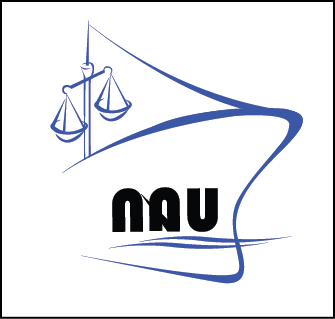- We have, off late, been seeing some claims related to refrigerated cargo arising due to the machinery outages during the sea voyage and perhaps this is due to the extreme heat conditions at the location from where the cargo emanatesi. Given that this may be an issue faced by Container Operators/NVOCC’s (“CO”), we are writing this article to focus on their obligations (for both a Dry and Specialized containers such as Reefers/Tanks/etc.), the defences available against cargo claims together with the potential for recovery from their (CO) Insurers (both liability and equipment).
- The general practice is either for the Shipper or their appointed agents to pick up and transport an empty container from the CO’s designated depot to their (Shippers) warehouse for cargo operations. At the time of pick up, the Shipper or their (Shipper’s) agent is expected to inspect the container and accept the container only if the container/s are found suitable. While this is the theory, in practice, in periods of great demand, the Shipper or their agent may have limited time to inspect the container at the time of pick up and may miss some of the defects present in the container. Nevertheless, when the container is trucked into the shipper’s warehouse, the shipper has an opportunity to inspect the container. If the container is found to be unsuitable, Shipper should reject the container and seek a fresh one. We admit that the Shipper is not expected to be an expert in the field of container inspection and if they miss out deficiencies which cannot be sighted or are latent, they cannot be faulted On the other hand, if the Shipper proceeds to load the cargo knowing that the container has deficiencies, then arguably any loss arising from the deficiencies of the container is due to the reckless behavior of the Shipper such that a CO may indeed be entitled to defend any cargo claims pursued against them. On the other hand, if the claim is submitted by an endorsee of the Bills of Lading issued for the shipment, the matter gets complicated given that the endorsee has no knowledge and further that any contractual provisions may be overruled by the provisions of the Hague / the Hague Rules. Nevertheless, we submit that the CO would, at least, be entitled to pursue the Shipper for an indemnity and whether they actually do so or not would depend on both the law of the contract and the jurisdiction where the Shipper is seated at.
- All containers used in sea carriage are manufactured to specifications laid out by the various classification societies. Additionally, CO have a duty to either to have a periodic examination scheme (“PES”) or an approved examination program (“ACEP”) to fulfill their obligations under the International Convention of Safe Containers (“CSC”) and which is more to do with safety rather than to ensure that the containers are fit for use for cargo. The issue with the CSC is while more than 80 countries have ratifiedii the convention, our understanding is that most of the countries do not have a system to police the CO’s. From our limited experience in being involved in the trade at a location which is not a signatory to the CSC Convention, we note that the general practice of the CO’s is for containers to be inspected at the time of empty return to their depots where the various deficiencies are noted and repaired prior to the next use.
- The question is whether the maintenance of containers based on fault-based inspection at the time of return together with the PES / ACEP as required under the CSC, would suffice to fulfill the CO’s obligation to provide a seaworthy container?
- Standard expected of a CO: Given that we are considering a CO who is trading on board ships, they would invariably be contracting either compulsorily by the application of law (in the case of negotiable documentsiii) or contractually (say by the incorporation of a paramount clause) based on the Hague or the Hague Visby Rulesiv. In this regard, the CO would be acting as a Carrier such that they would be obligated to provide a “Seaworthy Container”. What is Seaworthinessv could be discerned from the English Case, The Eurasian Dream [2002] 1 Lloyd’s Rep 719 and which requires the Carrier to have the degree of fitness to encounter the ordinary risks of the voyage and include cargo worthiness of the container (in this case, read Container instead of Carrier).
- Whether the standard has been reached? We submit that in the case of:
- the ubiquitous dry vans, given that the container’s role is restricted to providing cargo space together with lashing rings for the cargo, the inspections at the time of empty return coupled with PES or ACEP should generally suffice.
- special containers which have machinery or special parts, the inspections at the time of empty return coupled with PES or ACEP may not suffice to fulfil the obligations of the CO. This is because the CSC Convention is more related to safety and not usability of the container. Given that there is machinery or special parts involved, it would be best to consider the manufacturers approved maintenance schedule and which coupled with the PES or ACEP should suffice to fulfill the CO’s obligations to provide a Seaworthy Container. The reason why we suggest that the manufacturers maintenance schedule should be considered is by drawing an analogy say to a car manufacturer, who would recommend servicing of the car based on either the mileage or the date of last service and not on the basis of a fault based event.This being the case, we submit that in the case of a reefer container, it is not enough for the CO to conduct a Pre-Test Inspection (“PTI”) prior to release to the Shipper but also that the CO should have a regular maintenance schedule based on the manufacturer of the machinery reccomendations to fulfill their obligations to provide a “seaworthy” container.
- What happens if the standard of “Seaworthiness” is not fulfilled: As stated in 4 a above, given that the Hague or the Hague Visby Rules would apply either by force of law or contractually, CO’s may loose their entitlement to the exclusions available given that their failure to provide a seaworthy container may be considered as an actionable fault. Neverthless, CO’s would be entitled to limit liability except in the case when they were found reckless and when the Hague Visby Rules applyvi.
- Insurance: A CO would generally be insured for their Liability to Cargo and for the value of the equipment (Property Cover). We will consider the application of policies below:
- Liability cover: While there are different wordings in the market, we note that the cover provided is similar and which is for “liability for physical loss of and damage to cargo and resulting consequential loss”. The policy wordings also provide for General Conditions / Exclusions and invariably require the Insured (CO) to manage their assets to the manufacturers recommendations. This being the case, if the loss is due to the failure to manage/maintain the container/s, Insurers may be entitled to deny cover.
- Property Cover: The cover generally provided is based on the wordings of the Institute Container Clauses 1/1/87 (“ICC 87”) modelled on the Institute Cargo Clauses.The ICC 87 policy wordings provide for limited recovery for machinery damagevii and this being the case, if the loss is related to damages arising due to the deficiency in the machinery without any external cause, there would be no recovery under the policy.
- Conclusion:
- While the potential exposure for the property/equipment risks may not be significant, the exposure with respect to the cargo liability may indeed be significant.
- It would be best practice for CO’s to implement either the PES or ACEP irrespective of whether it is a requirement in the countries where they trade.
- Given that there is a duty on the CO to ensure that the container is seaworthy, ensuring that the containers are maintained according to the manufacturer’s specifications will go a long way in dealing with this aspect.
- If the causative link to a loss is due to improper maintenance, the CO may not be entitled to the exclusions available under the Hague and the Hague Visby Rules. Additionally, if the CO is found to be reckless and if the Hague Visby Rules were to apply, then they (CO) may loose their entitlement to limit liability.
- In order to seek reimbursement under the liability policy, the Insured would have to demonstrate that they have maintained the equipment sufficiently to fulfill their obligations to provide a “seaworthy” container. With respect to the property/equipment policy, the policy will only be triggered to respond from an external event and not due to the failure of the machinery / equipment itself.
i. In this case, the Container Operator has a defence given that the cargo was not pre-cooled and the cargo interests expected the cargo to be cooled to set temperature by the reefer machinery and which it is not intended for. Given the difference between the cargo temperature at loading and the set temperature, the chances of machinery outages should be something which the CO cannot be faulted for.
ii. See https://wwwcdn.imo.org/localresources/en/About/Conventions/StatusOfConventions/x-Status.xlsx
iii. See our earlier article Bills of Lading – NVOCC’s where we argue that NVOCC’s can issue Bills of Lading.
iv. See TT Club Series 100 Bills of Lading which is available to members of TT Club.
v. See article by Chakaravarthi Thillainathan LLM, ACIArb on Owners implied obligations II – The Duty to provide a Seaworthy Ship
vi. See Art IV5(e) of the Hague Visby Rules.
vii. See Clause IV of the Institute Container Clauses Time 1/1/87. See also Clause 2.1 of Section A11 of the TT Club – Transport and Logistics Operators 2022 wordings which also has the same exclusions.


